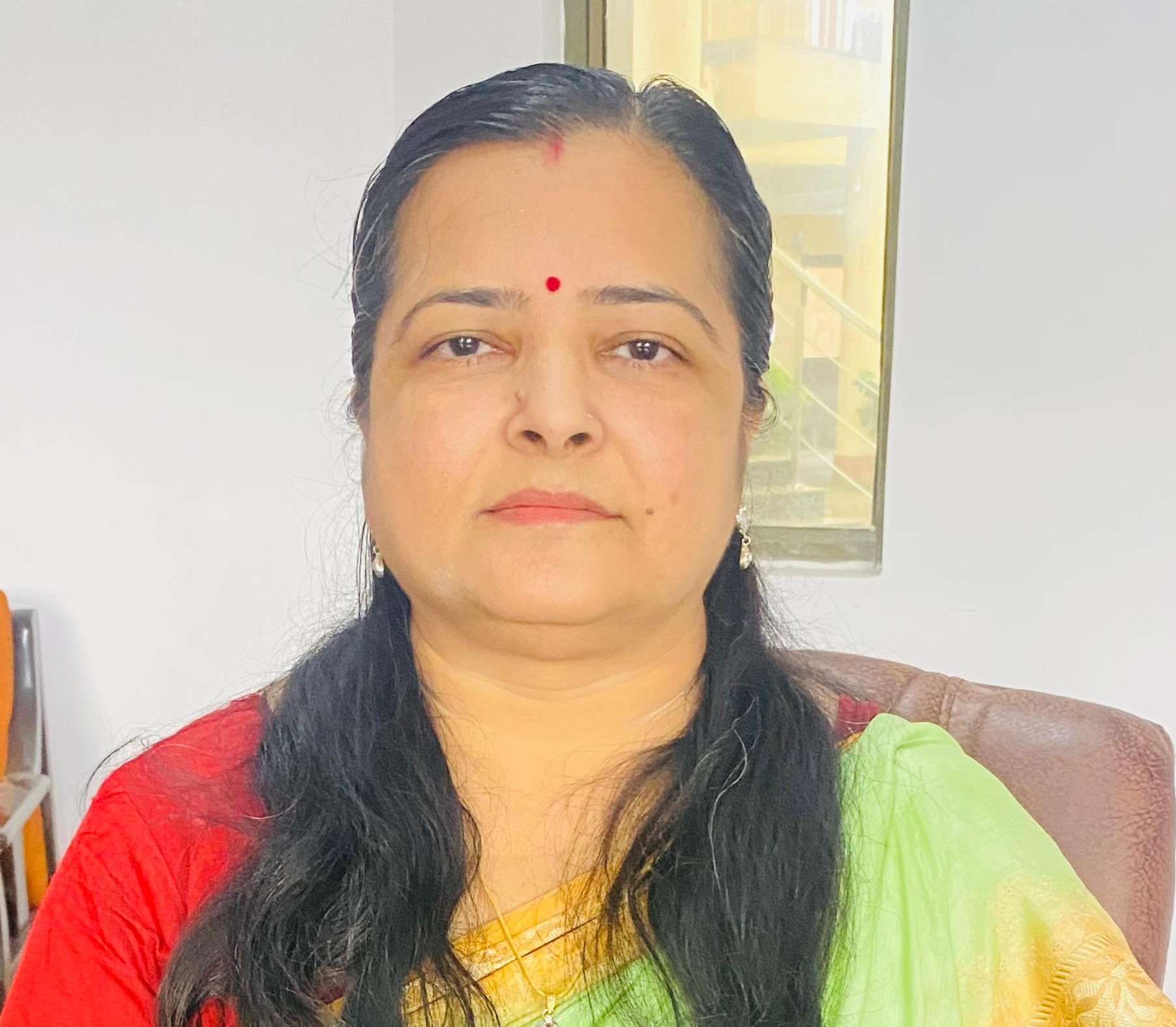Exploration of drug-drug interaction in prescriptions of libyan practitioners in community pharmacies
The drug-drug interactions (DDIs) are actions or events that occur when two or more drugs administered together, may cause a clinical significance or not. There are certain factors that may affect the severity of DDIs such as age, gender, number of drugs prescribed, and physician specialists. This study aims to answer: Is there DDI in Libyan community pharmacies? In addition, to explore the factors that might be affecting DDI. Drug Interactions Checkers are used. 200 prescriptions were collected randomly from two different areas ( high and low income),100 from each one and were used to investigate the DDIs by using two different sources (Drugs.com and BNF platforms), bearing in mind, age, gender, prescribers’ specialty, and drug number (prescription size). A personal interview questionnaire with pharmacists for investigate a source of DDI knowledge was considered. The correlation test was used to analysis the findings. The randomly selected sample has 316 drug combinations. The study has revealed a minimum of three drugs (46.0%). In general, Drugs.com was the richer source of DDI than BNF (66.5% and 34.5%, respectively). It is found that 66.5% (67.0% of this is moderate DDI) of these combinations have DDI by Drugs.com. A significant correlation between DDI and gender (male > female, p = 0.035) was found. In a state of residential areas, the results are similar in both selected pharmacies. Most moderate DDIs (21.0% and 15.0%) are prescribed by orthopedics and psychiatrists, respectively. The observational interview questionnaire indicated that 100% of the participating pharmacists had no source of knowledge regarding DDI, 100% of 200 prescriptions had no chick it regarding DDI and 100% of found DDI is released to use by community pharmacies to patients. More than half of the prescribed drug combinations have DDIs (classified as moderate DDIs), and all of them are released for use by pharmacists.
 Mediterranean journal of pharmacy and pharmaceutical sciences
Mediterranean journal of pharmacy and pharmaceutical sciences
Utility of the bactec mgit 960 tb system for recovery of mycobacteria
Background and Objectives: Pulmonary tuberculosis (PTB) remains a public health issue in Nigeria. The rapid diagnosis of PTB is essential for the early initiation of treatment and management of patients. The utility of the BACTEC MGIT 960 TB system was evaluated and compared with the Lowenstein Jensen (LJ) culture method for the recovery of Mycobacteria from sputum samples. Methods: A total of 2400 sputum samples submitted to the South East TB Zonal Reference Laboratory, Amachara Umuahia, Nigeria were tested. Samples were decontaminated using the standard N-Acetyl-L-Cysteine Sodium Hydroxide method and concentrated before processing. The processed samples were inoculated into both MGIT 960 tubes and LJ medium and incubated accordingly. Results: From all sputum samples, Mycobacteria were recovered from 201 (8.4%) sputum samples by the MGIT 960 system and 175 (7.3%) by LJ culture (p=0.014). The sensitivity for MGIT and LJ culture for mycobacteria were 95.0% and 80.1%, respectively. Among the 201 MGIT-positive cultures, 127 (63.2%) were identified as Mycobacterium tuberculosis complex and 74 (36.8%) as Mycobacteria other than tuberculosis (MOTT). The recovery rate of MTBC from LJ-positive samples was 84.0% and MOTT 16.0%. MGIT 960 identified more MOTT than LJ culture (p=0.045). The contamination rate associated with MGIT and LJ culture was 4.1% and 2.5%, respectively (p=0.037). The time to detection of mycobacteria in MGIT 960 and LJ was 14.8 days and 33.2 days, respectively. Conclusion: MGIT 960 has good diagnostic accuracy. It provided a more rapid and higher recovery of all mycobacteria than the LJ culture.
The effect of cigarette smoking on the oxidant–antioxidant imbalance in patients with chronic obstructive pulmonary disease
Background Predisposing factors for chronic obstructive pulmonary disease (COPD) comprise endogenous genetic factors and exogenous factors such as positive and negative smoking, air pollution, inhalation of dust, and work-related chemicals. Because only a small percentage of smokers develop COPD, it is thought to arise as an outcome of environmental harm and a host’s response system, which boosts the tendency of the disease to arise. Objective To clarify the effect of smoking on the level of oxidant–antioxidant in patients with COPD. Patients and methods Thirty patients with COPD (20 smokers and 10 nonsmokers) and 40 healthy individuals (18 smokers and 22 nonsmokers) participated in this study. The investigations included measurement of malondialdehyde (MDA), superoxide dismutase (SOD) activity, catalase (CAT) activity, glutathione peroxidase (GPx), glutathione reductase (GR), vitamin C, and glutathione (GSH) content. Results SOD, CAT, GPx, GSH, GR, and vitamin C were significant lower (P<0.0001) among patients with COPD (smokers and nonsmokers) than in the control group, whereas the MDA levels were elevated (P<0.0001) in patients with COPD (smokers and nonsmokers) when compared with the control group. Moreover, the values of SOD, GSH, and GPx were significantly lower (P<0.001) in smokers with COPD as compared with nonsmokers with COPD. Finally, there was no significant difference in the level of MDA between patients with COPD (smokers and nonsmokers). Conclusion There is a significant reduction in the level of some antioxidants (SOD, GSH, and GPx) in smokers with COPD compared with nonsmokers with COPD, but other antioxidants (CAT, GR, and vitamin C) did not change significantly, whereas the oxidant levels (i.e., MDA) were relatively convergent in patients with COPD (smokers and nonsmokers). This, in turn, points to the modest role of smoking in the causation of oxidant–antioxidant imbalance in this diseas
Two-phase flow in microfluidic-chip design of hydrodynamic filtration for cell particle sorting
As one of the flow-based passive sorting, the hydrodynamic filtration using a microfluidic-chip has shown to effectively separate into different sizes of subpopulations from cell or particle suspensions. Its model framework involving two-phase Newtonian or generalized Newtonian fluid (GNF) was developed, by performing the complete analysis of laminar flow and complicated networks of main and multiple branch channels. To predict rigorously what occurs in flow fields, we estimated pressure drop, velocity profile, and the ratio of the flow fraction at each branch point, in which the analytical model was validated with numerical flow simulations. As a model fluid of the GNF, polysaccharide solution based on Carreau type was examined. The objective parameters aiming practical channel design include the number of the branches and the length of narrow section of each branch for arbitrary conditions. The flow fraction and the number of branches are distinctly affected by the viscosity ratio between feed and side flows. As the side flow becomes more viscous, the flow fraction increases but the number of branches decreases, which enables a compact chip designed with fewer branches being operated under the same throughput. Hence, our rational design analysis indicates the significance of constitutive properties of each stream.
Work-life integration and female lecturers’ task performance in higher educational institutions in imo state
This study examined work-life integration and female lecturers’ tasks performance in government-owned higher educational institutions in Imo state. The correlational research design was adopted for the study. Two research questions were answered while two hypotheses were tested. The population of the study comprised 1292 female lecturers in government-owned higher educational institutions in Imo State. The sample size of the study was determined using Taro Yamane formula. Proportionate stratified random sampling technique was used to draw 406 respondents from the strata. Two sets of instruments titled; Female Lecturers’ Work-Life Integration Questionnaire (FLWLIQ) and Female Lecturers’ Task Performance Questionnaire (FLTPQ) were used for data collection. Face and content validities were ensured by experts including the researcher’s supervisor. The reliability coefficient of the FLWLIQ and FLTPQ was calculated to be 0.97 and 0.95 with the help of Cronbach Alpha. Multiple and simple regressions were used to answer the research questions. ANOVA associated with multiple regression and t-test associated with simple regression were used to test the null hypotheses at 0.05 alpha level. It was found that self-management skills and effective communication system predict female lecturers’ tasks performance by 54% in government-owned higher educational institutions in Imo state. Based on the findings, it was concluded that work-life integration is positively and moderately significant to female lecturers’ tasks performance in higher educational institutions in Imo state. It was therefore recommended among others that; management of tertiary institutions in Imo state should consider the establishment of constructive outlets for female lecturers to vent any form of inconveniences that is inimical to their job functioning so as to reduce tension. Also, management in each of the institutions should communicate staff duties in an effective manner by setting up active communication channels in each faculty.
Liposomes for drug delivery - liposomes
Liposomes are a novel drug delivery system (NDDS), they are vesicular structures consisting of bilalyers which form spontaneously when phospholipids are dispersed in water. They are microscopic vesicles in which an aqueous volume is entirely enclosed by a membrane composed of lipid bilayers. NDDS aims to deliver the drug at a rate directed by the needs of the body during the period of treatment and direct the place of action. Liposomes are colloidal spheres of cholesterol non-toxic surfactants, sphingolipids, glycolipids, long chain fatty acids and even membrane proteins and drug molecules or it is also called vesicular system. It differs in size, composition and charge and drug carrier loaded with variety of molecules such as small drug molecules, proteins, nucleotides or plasmids etc. Few drugs are formulated as liposomes to improve their therapeutic index. Hence a number of vesicular drug delivery systems such as liposomes, niosomes, transfersomes and pharmacosomes are developed. The focus of this chapter is to the various method of preparation, characterization of liposomes, advantages and applications, etc. Liposomes for Drug Delivery - liposomes
Social big data: a twitter text mining approach to the communication of universities during the lebanese protests
Since October 17, 2019, Lebanon has experienced unprecedented popular protests, demanding the departure of the entire political class, accused of being gangrened by corruption. Country paralyzed, institutions closed for more than two weeks, the eyes are turned to universities that have closed their doors but whose community (teachers and students) actively participate in the national jump. This study explores the use of social media by universities in Lebanon during the national revolution using social big data technology on Twitter in comparison to the national usage of twitter. Important information was collected, analyzed and visualized using the R language.
A performance comparison of vapour compression refrigeration system using various alternative refrigerants
A performance analysis on a vapour compression refrigeration system with various refrigerants mixture of R152a, RE170, R600a, and R290 were done for various mixture ratios and their results were compared with R134a as possible alternative replacement. The results showed that all of the alternative refrigerants investigated in the analysis except R431A, [R 152a (29%), R290 (71%)] have a slightly higher performance coefficient (COP) than R134a for the condensation temperature of 500C and evaporating temperatures ranging between -300C and 100C.Refrigerant blend of R152a/RE170 (20/80 by wt%) instead of R134a was found to be a replacement refrigerant among other alternatives. The effects of the main parameters of performance analysis such as refrigerant type, degree of sub cooling and super heating on the refrigerating effect, coefficient of performance and volumetric refrigeration capacity were also investigated for various evaporating temperatures.
The impact of media on society: a social perspective on demonetization
Our society is reflected through the media, which represents what society is like and how it functions. The sole medium that serves to keep people informed is media, whether it is written, electronic, or on the web. It also serves to amuse, educate, and inform the audience about current events. Our society's voice is now dominated by the media. A number of media platforms have brilliantly stirred the views of the younger generation and other segments of our society. The study's goal is to examine the media's involvement and efficacy throughout the demonetization process. The study's major goals are to look into the role of the media in informing people about the demonetization process and its consequences. The study will contribute to a better understanding of the role of the media in conveying information on significant problems and how individuals learn about current events. In Lucknow's South City and Eldeco neighborhood, a poll of 300 persons was held. The researchers devised a data gathering interview plan that took into account the function and type of media in raising public awareness. The convenience sampling method was used in the research investigation. The study focuses on media consumption patterns and behaviour throughout the demonetization period.
Analyzing game strategies of the don’t get angry board game using computer simulations
In the research described in this paper, we used computer simulations to analyze and compare different types of game strategies in the popular board game Don't Get Angry. Following a brief introduction, we summarized a few previous research papers examining similar board games' game strategies. Next, after a review of the Don't Get Angry game's official rules, we outlined four strategies that can be applied to increase the likelihood of winning. We simulated 50,000 games in which all four players made their moves randomly and 50,000 games where each used a different strategy. We tracked how frequently each player finished first, second, third, or last during the simulations. Furthermore, we recorded how many rounds were needed to complete the game for each player, how many times the players’ pawns were kicked out and returned to their houses by other players, and the number of players’ remaining steps during every gameplay. From the analysis of the recorded data, we could conclude that significant differences exist in the chances of winning the game for the examined strategies when all players use different strategies. The results improve the specific domain knowledge for the Don't Get Angry board game. It may help create more vigorous computer opponents and encourage further study to create a tool for evaluating students' strategic thinking while playing.
Tracking students' progress in introductory c programming courses through moodle tests with randomized questions
Assessing students' progress in introductory programming courses is crucial for identifying learning gaps and improving teaching methods. This study evaluates the effectiveness of Moodle-based tests with randomized questions in monitoring student progress in C programming courses at J. Selye University during the 2023/24 academic year. A series of ten tests were administered across two courses, covering essential programming topics such as data types, variables, conditional statements, loops, two-and three-dimensional arrays, recursion, and sorting algorithms. The results revealed significant variations in student performance, with recursion and the pretest/posttest loops presenting the greatest challenges. The correlation analysis of test scores showed strong relationships among related topics, confirming the structured progression of the curriculum. These findings suggest that Moodle-based assessments offer valuable insights into students' learning trajectories, enabling educators to adapt their instructional strategies accordingly. Such insights can help optimize introductory programming curricula, enhancing student engagement and understanding.
Implementasi strategi student team achievement divisions dalam pembelajaran tematik terpadu di sd darus sholah jember
This research was conducted at SD Darus Sholah, Jember which aims to answer the main problems related to the implementation of the Student Team Achievement Divisions learning strategy in integrated thematic learning. The problem studied in this research is the Implementation of the Student Team Achievement Divisions Strategy in integrated thematic learning at SD Darus Sholah, Jember. This research approach uses a qualitative approach with the type of phenomenological research. Methods of data collection using interviews, observation and documentation. Data analysis used the interactive model of Miles and Huberman, with the process of data collection, condensation, data display, and data verification. To test the validity of the data using triangulation. The results of this study indicate that: 1) At the presentation stage, the teacher starts with story material, reviews previous material, and learning activities in teams. 2) The teacher prepares a worksheet as a guide for group work and each member can contribute, the teacher makes observations, provides guidance, motivation, and assistance if needed. 3) Individual tests in groups. 4) Score development for individuals, the teacher combines the previous score with the final score. 5) Appreciation for the team is based on the assessment of individuals in the group so that the process of group assessment recapitulation is based on individual assessment of each group. Penelitian ini dilakukan di SD Darus Sholah Jember yang bertujuan untuk menjawab pokok permasalahan berkaitan dengan penerapan strategi belajar Student Team Achievement Divisions dalam pembelajaran tematik terpadu. Permasalahan yang dikaji dalam penelitian ini, Implementasi Strategi Student Team Achievement Divisions dalam pembelajaran tematik terpadu di SD Darus Sholah Jember. Pendekatan penelitian ini menggunakan pendekatan kualitatif dengan jenis penelitian fenomenologis. Metode pengumpulan data menggunakan wawancara, observasi dan dokumentasi. Analisis data menggunakan model analisis interaktif Miles dan Huberman, dengan proses data collection, condensation, data display, and data verifiying. Untuk menguji keabsahan data menggunakan trianggulasi. Hasil penelitian ini menunjukkan bahwa: 1) Pada tahap presentasi, guru memulai dengan materi cerita, mereview ulang materi sebelumnya, dan kegiatan belajar dalam tim. 2) Guru menyiapkan lembaran kerja sebagai pedoman kerja kelompok dan setiap anggota dapat berkontribusi, guru melakukan pengamatan, memberikan bimbingan, motivasi, dan bantuan jika diperlukan. 3) Tes individu dalam kelompok. 4) Skor pengembangan bagi individu, guru menggabungkan skor nilai sebelumnya dengan skor akhir. 5) Penghargaan bagi tim mendasarkan kepada penilaian terhadap individu dalam kelompok sehingga proses rekapitulasi penilaian kelompok, didasarkan kepada penilain individu masing-masing kelompok.
Water mass characteristic of ambon bay based on its temperature and chlorophyll-a distribution
Ambon Bay consists of the inner Ambon Bay (IAB) and the outer Ambon Bay (OAB) and they are separated by the shallow sill (12 m) Galala-Rumah Tiga. The topography of the bay makes it unique and causes the exchange of water mass between those two parts of the bay does not follow the daily tidal cycle. The aim of this study was to analyze the vertical and horizontal temperature and chlorophyll-a distribution in order to know the water circulation in Ambon Bay. This study was carried out during the monsoon, in November 2018. The CTD was used to measure in situ temperature and chlorophyll-a concentration. The data were analyzed by using Surfer and ODV programs. The results show that the temperature of the surface water (0-5 m) of Ambon Bay was 29.2℃. In depth 15-40 m, temperature was different between the IAB (27.7-28.2℃) and OAB (29,2-28.7℃). Chlorophyll-a concentration was found higher in the IAB than in OAB in all depths. In the depth >12 m, chlorophyll-a in the IAB was 1 mg/m3 compared to its concentration in OAB only 0.3 mg/m3. As a conclusion, the sill in Ambon bay causes unique circulation of water mass between IAB and OAB based on the analysis of temperature and chlorophyll-a concentration distribution.
Hypotensive activity of melilotus officinalis (l.) pallas
Melilotus officinalis (L.) Pallas. is used traditionally to treat hypertension and chronic venous insufficiency. The high prevalence of hypertension and the side effects of antihypertensive drugs potentiate us to evaluate Melilotus officinalis. The hypotensive effect of Melilotus officinalis butanol fraction (MOBF) was investigated in anaesthetised normotensive rats. The doses of 60, 80 and 100 mg/ kg, i.v., produced a significant (P<0.05) decrease in blood pressure. The statistically non-significant reduction in blood pressure was shown by 20 and 40 mg/ kg, i.v. These results suggest that Melilotus officinalis exhibited a hypotensive effect in normotensive rats. However, further evaluation of compound-related activity is required.
Tomato leaf disease classification by exploiting transfer learning and feature concatenation
Tomato is one of the most important vegetables worldwide. It is considered a mainstayof many countries’ economies. However, tomato crops are vulnerable to many diseasesthat lead to reducing or destroying production, and for this reason, early and accuratediagnosis of tomato diseases is very urgent. For this reason, many deep learning modelshave been developed to automate tomato leaf disease classification. Deep learning isfar superior to traditional machine learning with loads of data, but traditional machinelearning may outperform deep learning for limited training data. The authors proposea tomato leaf disease classification method by exploiting transfer learning and featuresconcatenation. The authors extract features using pre-trained kernels (weights) fromMobileNetV2 and NASNetMobile; then, they concatenate and reduce the dimensionalityof these features using kernel principal component analysis. Following that, they feedthese features into a conventional learning algorithm. The experimental results confirmthe effectiveness of concatenated features for boosting the performance of classifiers.The authors have evaluated the three most popular traditional machine learning classifiers,random forest, support vector machine, and multinomial logistic regression; amongthem, multinomial logistic regression achieved the best performance with an averageaccuracy of 97%.
Khat (catha edulis) as a risk factor for cardiovascular disorders: controversies and facts
The leaves of khat (Catha edulis) are chewed as a social habit for the central stimulant action of their cathinone content. There is growing concern about the health hazards of chronic khat chewing. Many authors have addressed the adverse effects of khat chewing on the cardiovascular and other systems. Based on a limited number of case reports and few prospective controlled studies, associations between khat chewing and the occurrence of myocardial infarction, dilated cardiomyopathy, and vascular diseases such as hypertension and cerebrovascular ischemia have been proposed. This review outlines the current knowledge on the adverse health effects of khat chewing on the cardiovascular system, assesses the strength and the limitations of the studies, and identifies the questions that the future studies should address.
Marine peptides in breast cancer: therapeutic and mechanistic understanding
Breast cancer is the most prevalent invasive form of cancer in females and poses a significant challenge to overcoming the disease burden. The growth in global cancer deaths mandates the discovery of new efficacious natural anti-tumor treatments. In this regard, aquatic species offer a rich supply of possible drugs. Studies have shown that several marine peptides damage cancer cells by a broad range of pathways, including apoptosis, microtubule balance disturbances, and suppression of angiogenesis. Many side effects, including immune response suppression, characterise traditional chemotherapeutic agents. The discovery of novel putative anti-cancer peptides with lesser toxicity is therefore necessary and timely, especially those able to thwart multi-drug resistance (MDR). This review addresses marine anti-cancer peptides for the treatment of breast cancer.
Preparation and characterization and biodistribution studies of lomustine loaded plga nanoparticles by interfacial deposition method
The incorporation of lomustine, a hydrophobic anticancer drug into PLGA nanoparticles by interfacial deposition method was optimized. Based on the optimal parameters, it was found that lomustine-PLGA nanoparticles with acceptable properties could be obtained. Optimization of formulation variables to control the size and drug entrapment efficiency of the prepared nanoparticles seems to be based on the same scientific principles as drug-loaded nanoparticles prepared by nanoprecipitation, solvent evaporation method. The process was the most important factor to control the particle size, while both the drug-polymer interaction and the partition of drug in organic and aqueous phases were the crucial factors to govern the drug entrapment efficiency. PLGA concentration at lower level (100 mg), 1:5 organic phase: aqueous ratio, 1%w/v PVA concentration, 3%w/v pluronic F68 achieved smaller particle size. Additionally, L:G ratio of PLGA 75:25, lower volume of organic solvent (1:10 organic phase: aqueous phase), higher initial drug content (10mg) enhanced the drug entrapment efficiency and maintained lomustine concentration in blood for an extended time period, elevated lomustine concentration in lungs and slowed the elimination of lomustine. The biodistribution profiles of prepared nanoparticles in albino mice showed higher plasma drug concentration for longer period of time, elevated drug concentration in lungs and slow elimination from kidney. No toxic effects of prepared nanoparticles were observed in histopathological examination of lungs and kidney. The systematic investigation reported here promises the development of PLGA nanoparticles loaded with lomustine when tested in Lung Cancer cell line L132 and toxicological/ histopathological studies in albino mice.
The potential abilities for using mathematical vectors in financial graphs
By using mathematical vectors calculations as financial modeling then further into a new form of quantitative analysis instrument for linear financial computation graphs. A new tool in financial data analysis as an indicator
Pharmacy student’s view about covid-19 vaccination in libya
Vaccination hesitation may affect the national efforts to slow down the spread of coronavirus among the population. This study was aimed to explore the views of final year pharmacy students at Faculty of Pharmacy, Elmergib University, Al kums, Libya towards COVID-19 vaccination. The study was conducted before the vaccine becomes available in Libya. A semi-structured questionnaire was distributed on March 14, 2021 to the fourth- year pharmacy students at Elmergib University, Al khums Libya. Results showed a high degree of hesitancy towards vaccination against this virus (52.6%). Student's participants who said they would take the vaccine probably have said that because of their stress that caused by COVID-19 pandemic (47.4%). With regard to the gender, the participants’ views had no significant difference between male and female students on whether to take the vaccine or not (P = 0.825). In conclusion, hesitations towards vaccination and stress caused by student fear from the virus need to be addressed to minimize public reluctant to take the vaccine and to improve the education process during the pandemic.
 Mediterranean journal of pharmacy and pharmaceutical sciences
Mediterranean journal of pharmacy and pharmaceutical sciences
Jacques Bazemon
Université Nazi Boni
Dr. Md Manzar Alam
Central Council For Research In Unani Medicine, Ministry Of Ayush, Government Of India, New Delhi
Most Popular Category
- Pharmacy (270)
- Education and social science (224)
- Pharmacology (220)
- Pharmacognosy (178)
- Business management (147)
- Pharmacology and toxicology (133)
- Pharmaceutical sciences (130)
- Education and training (129)
- Medicine (124)
- Research (123)
- Health Science (100)
- Management (98)
- Biological Sciences (97)
- Computer Science (92)
- Computer Science Applications (85)
- Public health (83)
- Human resource management (83)
- Engineering (77)
- Accounting and finance (73)
- Information technology (68)
 Kamal singh
Kamal singh
 Educare: journal of primary education
Educare: journal of primary education
 Dr. salman ahmed
Dr. salman ahmed
 Mehdhar s. a. m. al-gaashani
Mehdhar s. a. m. al-gaashani
 Archana mehrotra
Archana mehrotra
 Dr abdul rahim wong
Dr abdul rahim wong